Kevin Cameron is an artist, BAFTA nominated filmmaker and a graduate of the universities of Bristol and Glasgow. He has made films for the BBC, ITV and Canal Plus in France, amongst others. His most recent and soon-to-be-premiered work, Alasdair Gray, A Life in Progress, spans fifteen years of documenting artist Alasdair Gray. Here he tells us about about the process behind his work:
I first met Alasdair in about 1997, when he recorded a voice over for a 16mm experimental doc that I had made with, the then, Glasgow Film and Video Workshop. Pre-internet and (for me) pre-mobile, it was a very convoluted path to hook up with him involving connections that my wife had had with the Free University Alasdair had been part of in the ’80’s. When we finally met, we chatted about some other work I had been involved with – documentaries on radical psychiatrist RD Laing, the Kino movement in Glasgow, filmmaker Jenny Gilbertson and a short I had made for Canal Plus in France. Later he visited me and watched some of this work and seemed quite taken with it, writing me a very nice letter assuring me that I had made the right choice of career…something that I wasn’t entirely convinced of at the time as I churned away making grant aided film work and updating weather maps for teletext to bring in an income. It was felt like a wonderful validation from an artist whose work I had an enormous admiration for.
From these initial encounters, he suggested I might like to make a film about a mural he was planning on restoring in a tenement in Glasgow’s West End. I knew that Alasdair painted but it was an area of his work I only had a vague knowledge of. Alasdair wrote a proposal and I took it to Ken Neil, the then head of arts at Scottish TV (yes, at that time they had an Arts Department producing 26 half hour documentaries a year!). Ken, having seen the experimental film I had made with Alasdair’s voice over, The Fishmonger Scales and Other Red Herrings, liked the idea and even accepted Alasdair’s curve ball of not wanting to appear on the film as a talking head. I resolved this challenge by shooting on a Bolex film camera and intercutting other material of interviews with people who had strong connections to some of Alasdair’s murals dotted around the central belt. The resulting half hour film, Unlikely, Murals Mostly, was a mix of 16mm material shot on a wind up camera and interviews shot on video. It was nominated for a Scottish BAFTA in 2002 and was even, on the invitation of artist Lucy McKenzie, snuck into a gallery in Germany at one point.
I kept up the contact with Alasdair and worked with him again when he began refurbishing another mural, this time in Palacerigg Park in Cumbernauld. As many of Alasdair’s collaborators find, it was becoming apparent that I was embarking on a much longer term project than I had initially thought. Working with Alasdair involved a long period of building up trust – he spoke on several occasions of feeling that he had been stitched up by crews using footage that he hadn’t been aware was being shot. At this stage, in around 2001, I had bought my first DV camera and was nervously experimenting with how it might work. It wasn’t until about 2004, after I had made a film about Alasdair’s Oran Mor mural for BBC Scotland, that I started asking Alasdair to wear a radio mic.
I’ve always felt that there is something magical about seeing a film that engages with a subject over a number of years. Its something that TV usually doesn’t do – people in power in TV institutions change rapidly and rarely commit to something like this – normally a fully crewed arts doc on TV might shoot over 5 consecutive days. I shot the film around other parts of the work I was doing. For a long time this was participative work in West Dumbartonshire (work that still is an central part of my practice as a filmmaker). so instead of heading home over the Erskine Bridge I would head down Great Western Road and drop in for an hour or so on Alasdair at the top of a scaffold, adding the material to my box of tapes marked “A Gray”. Being a freelancer and more often than not dipping in and out of projects, it was good to feel part of Alasdair’s team. For a while I was even on the payroll of the Oran Mor, building up material for the second TV instalment of the project, this time for BBC Scotland’s Artworks strand.
The BBC doc in 2004 allowed me to not only work with a crew, but also to access the archives in a way that I couldn’t have done otherwise, and this subsequently became a central plank of the feature length film. There isn’t a lot of material but like most everything Alasdair does, his work with TV was extraordinary and came with the Gray stamp – even a straightforward interview to camera becomes a meditation on the medium of television and its requirements for the soundbite. In a Hugh Weldon commissioned programme about Alasdair in 1964, Under the Helmet, he dissects the relationship between audiences, artists and the camera in a way that still seems provocative.
Over the years the relationship waxed and waned, and I got used to catching up with him and filming when new projects started. The underground mural began in 2009 and typically for Alasdair it involved a whole new process of ceramic tiling that no one had tried on the scale that he, and his collaborator Nichol Wheatley, had tried before. Again filming Alasdair I took the opportunity to experiment with a medium that still seems closer to film than video: DSLR cameras. At the time these new generation of digital stills cameras promised cinema quality images albeit with the proviso that sound had to be recorded separately.
Having gathered all this material the question became how to bring it together. I knew that I didn’t want the film to follow a linear path as that seemed to be at odds with something that had been shot on different formats and contained a strong element of archive. I also knew that I needed to buy some time away from my other commitments to make this happen. I approached a number of production companies but in the end it was Hopscotch Films that put some money in. They had previously produced my BBC programme 0-60 about Alasdair, they also have a strong reputation in supporting filmmakers who want to make more singular pieces of work. They had also the experience of producing The Story of Film, which similarly was conceived on a grand scale and had been undertaken without an initial commission.
In terms of editing observational work, I normally wade in and start chopping to get a feel for the material and build it up, mosaic like. I’ll make long cuts of particular sequences and build up the film with several lines of narrative cutting across the work as a whole. I like to think this, and the absence of a narrator, gives a fresher feel to the overall work, the drawback to this being is that it doesn’t necessarily feel like this on the umpteenth viewing as you try to see if the overall shape “works”. It requires enormous amounts of concentration to bring a fresh eye to the process. It was a strange experience looking through material that I had shot ten years previously, stranger still to see it “upresed” from standard to high definition.
After seeing an initial cut of the film, Allan Hunter at the Glasgow Film Festival invited us to show it as a work in progress in February 2013. It proved to be an equally illuminating and terrifying experience. Sitting at the back of the cinema I got a sense of where it was hitting the mark and where it was falling short. Following on from this I shot more interviews with Alan Bisset and Ian Rankin, recutting it again and screening it at the Dunoon Festival in June the same year.
A year on from this work in progress stage is the films premier at the Sheffield Documentary Film Festival. Alasdair has already given me a long list of areas of how the film could be improved and we have discussed tentatively how this might happen. It may yet turn out to be the first instance of a subject’s cut! What I hope is that Alasdair Gray, A Life in Progress, gives an unusually intimate insight into an artist’s life, the way Alasdair works and the way he lives…whilst retaining everyones dignity. But not too much.
Trailer: Alasdair Gray, A Life in Progress
All images courtesy of Kevin Cameron.
Kevin Cameron’s Alasdair Gray, A Life in Progress will premiere at Sheffield Doc Fest on 12 June in PBS America Showroom 3.
//////
Want to read more blogs by artists? Look here.


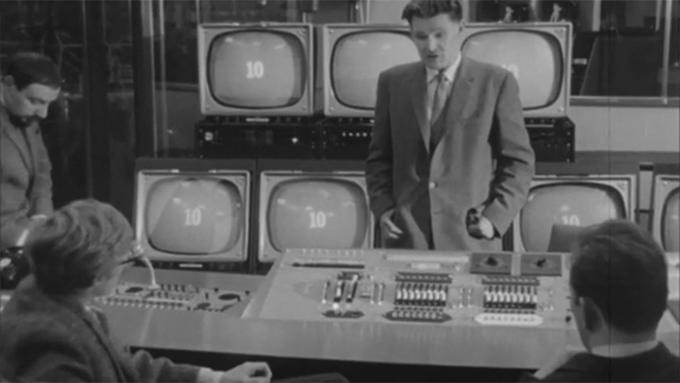
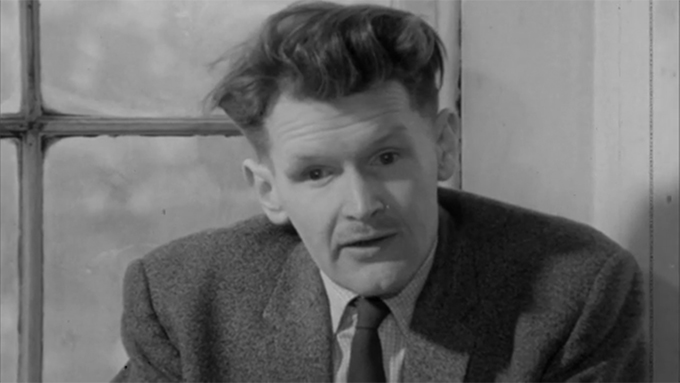
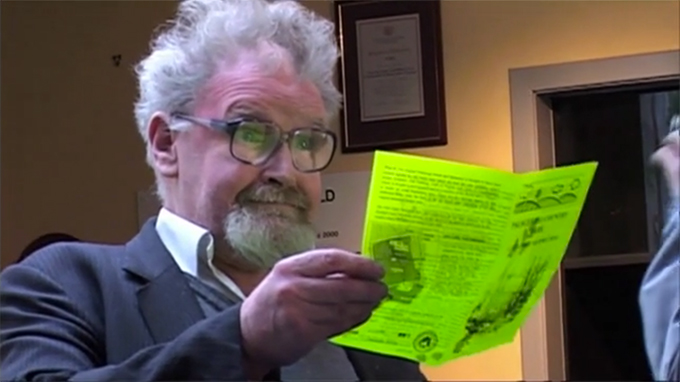
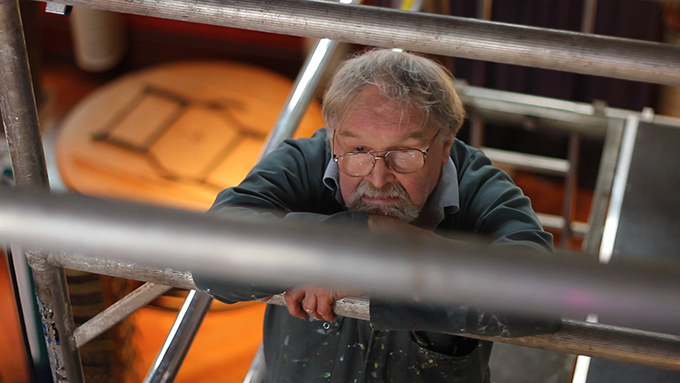
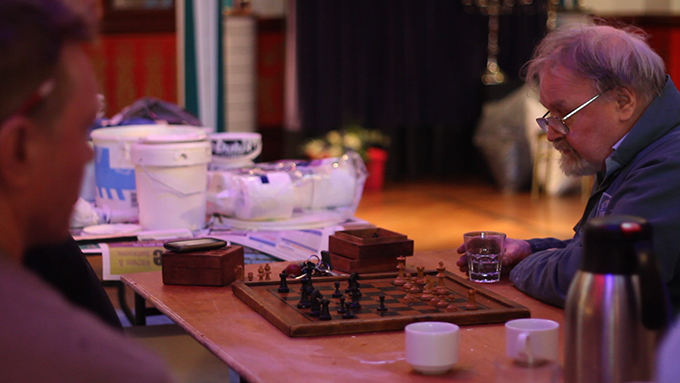
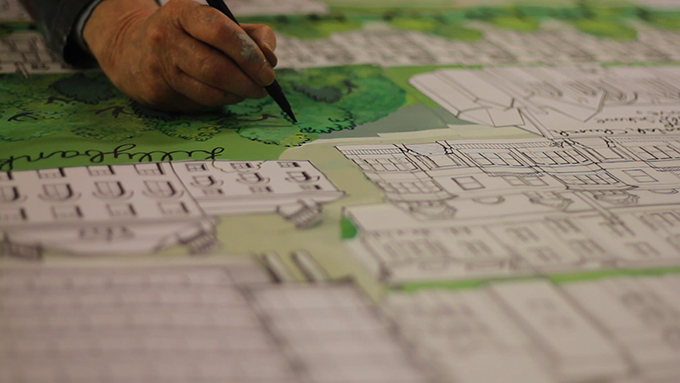
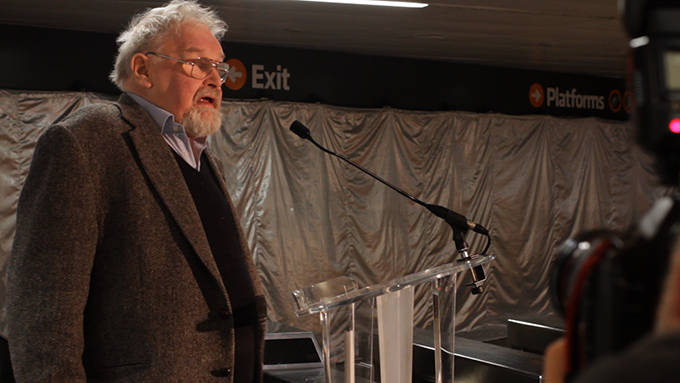
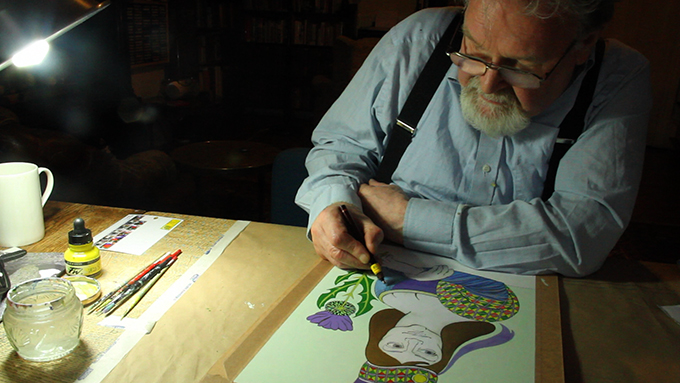
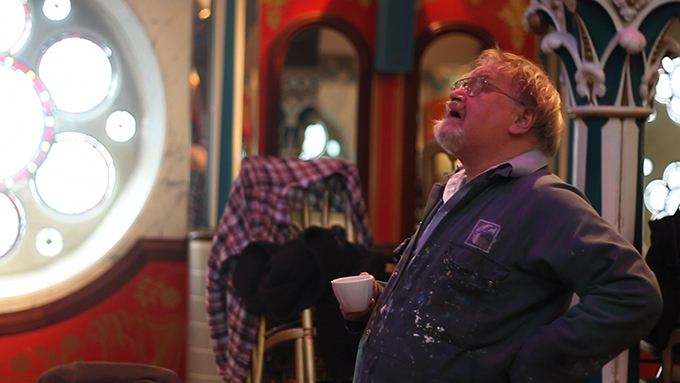
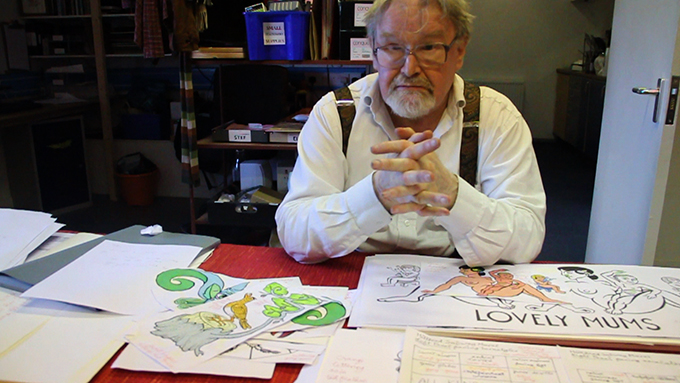


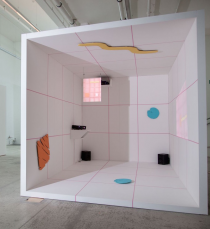
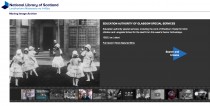









Comments